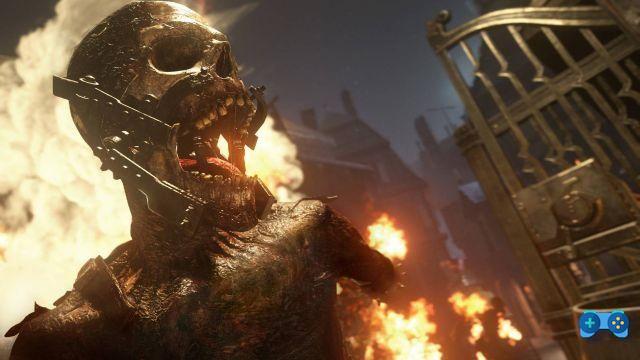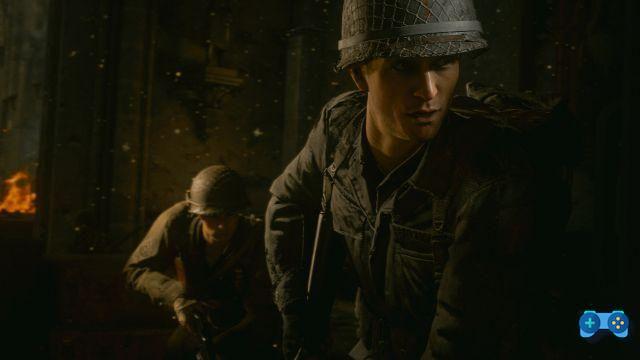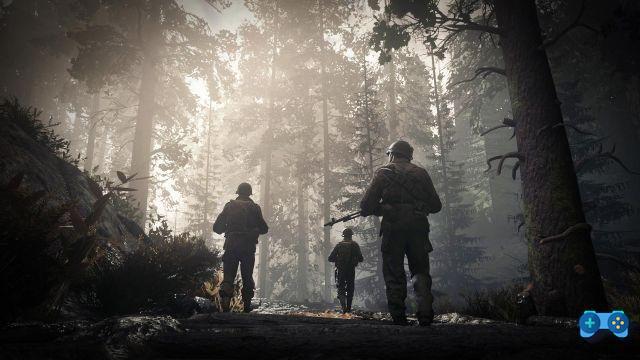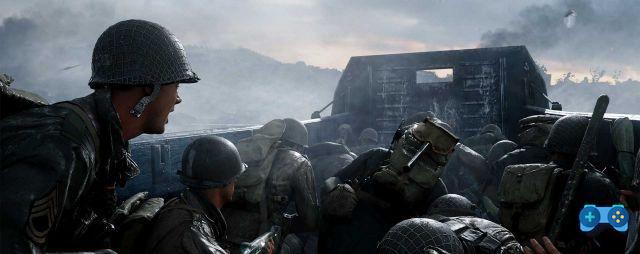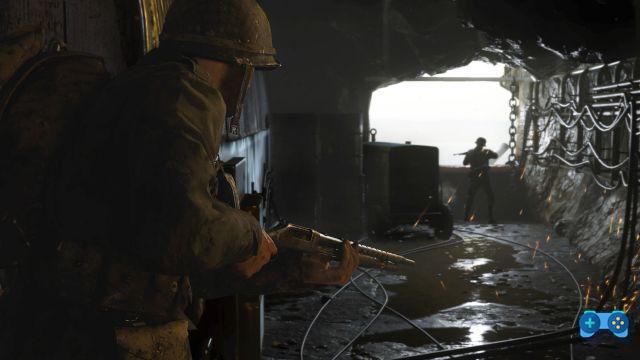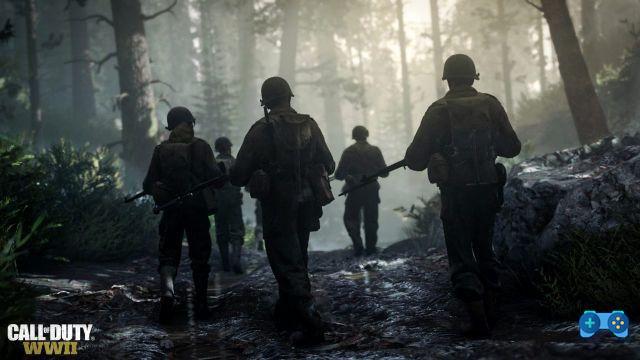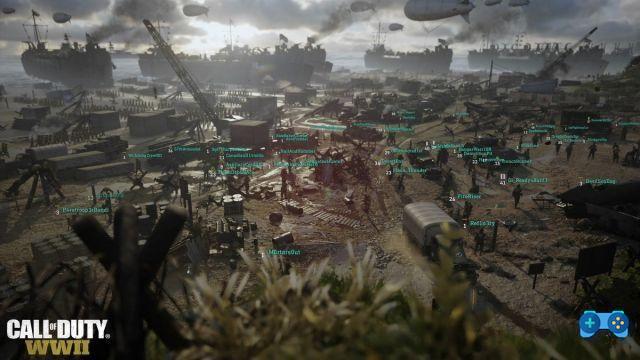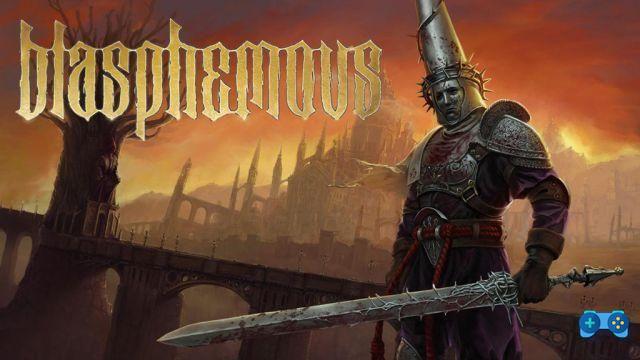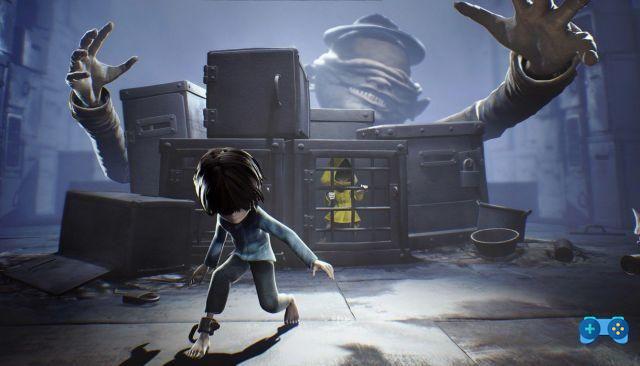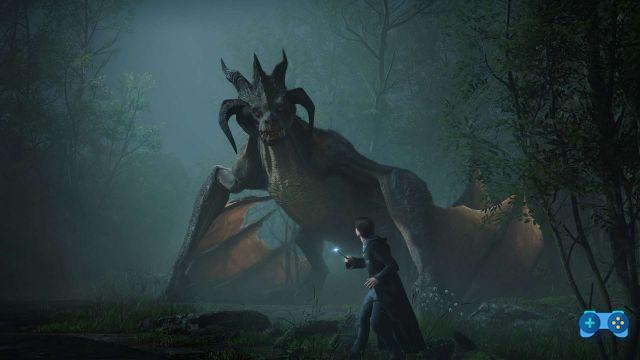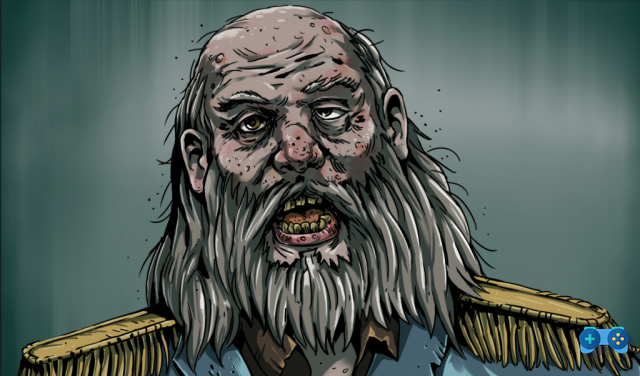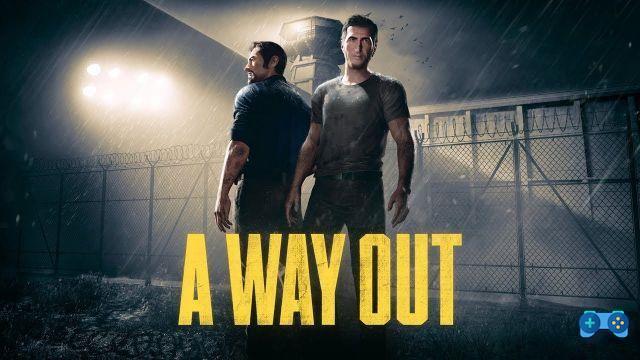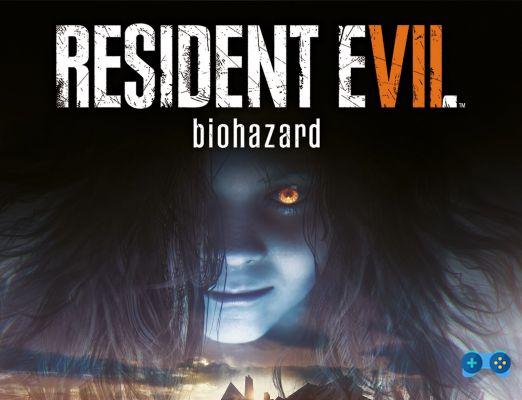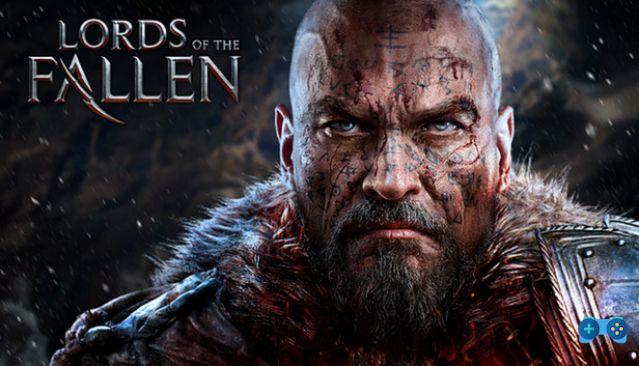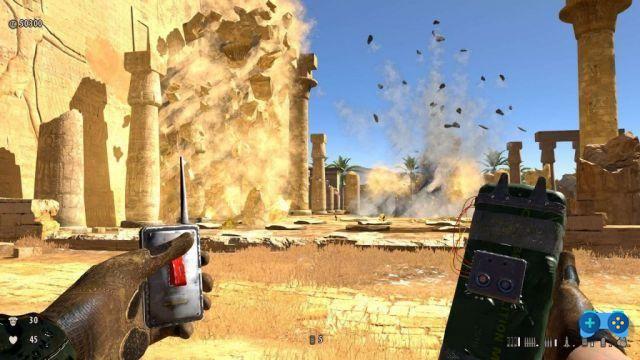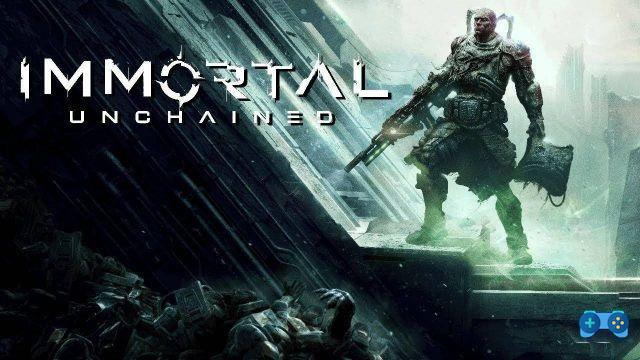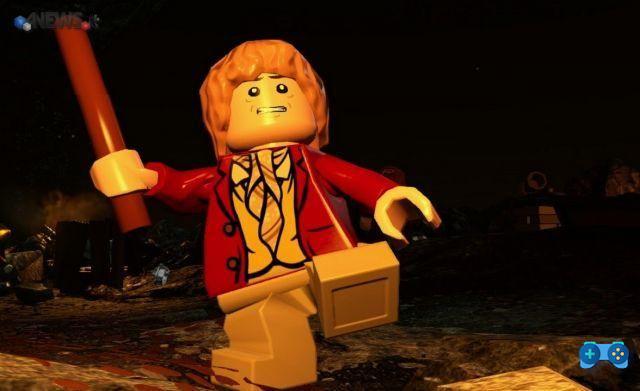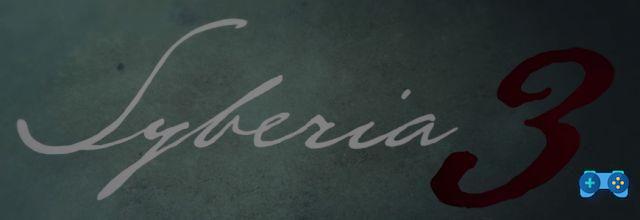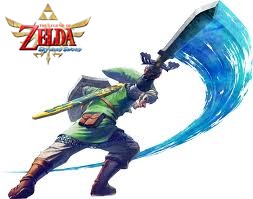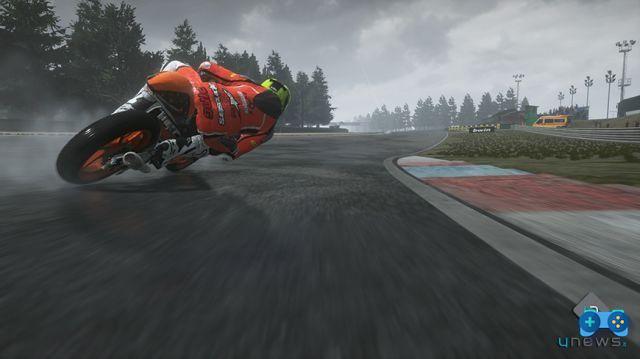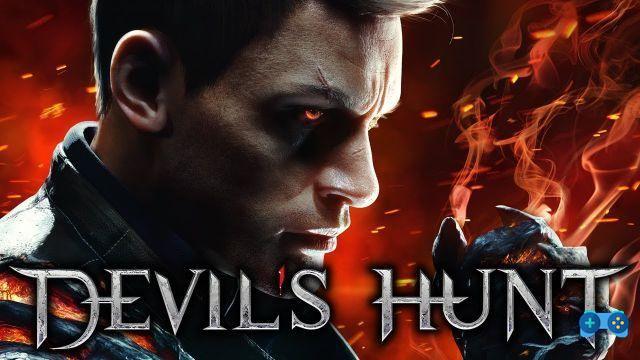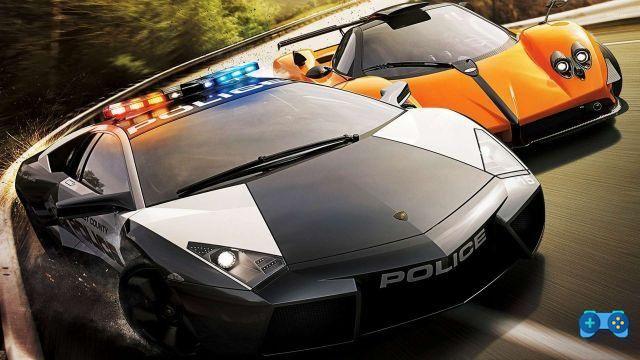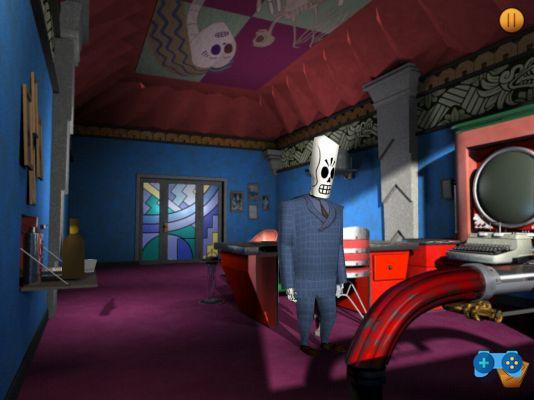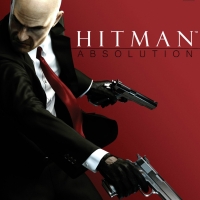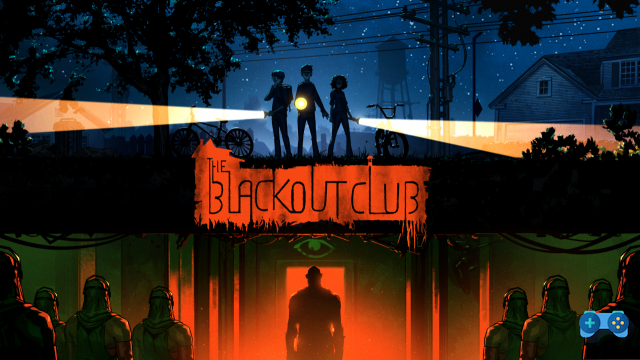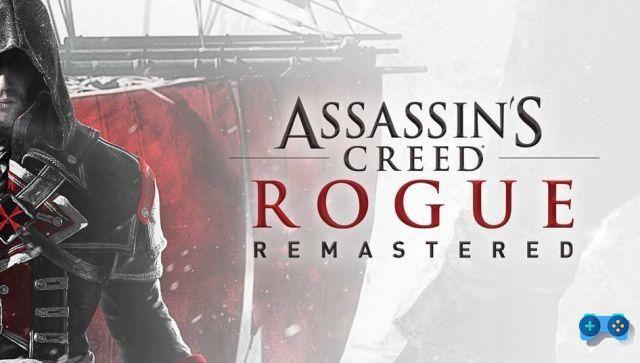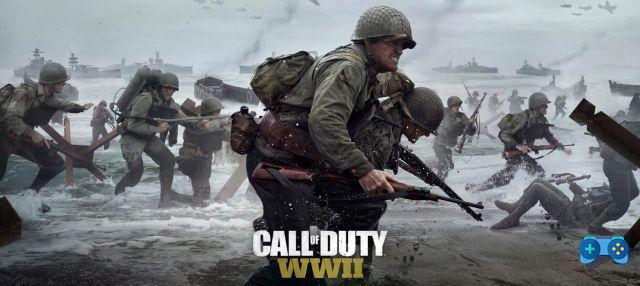
Back to the origins.
This is how it goes all too often in the longest-running videogame and cinematographic series: we try to carry on a ten-year saga that has rode the wave of success for years, but the desire for novelty and revolution is reduced to being continuously a succession of expedients that, piling up from time to time on the rump, lead to give birth to predictable and sometimes bad productions in various respects, thanks to the lack of fresh ideas that can reinvigorate everything. Here, outspoken, this is a bit of the anecdote that tells the story from five years to this part of the famous series of Call of Duty, which has seen the viewfinder pointed more and more towards a futuristic (at times almost surreal) context and of which it has exasperated the concept, squeezing it to the last drop.
At this point, when you are one step away from the precipice of monotony, you have two choices: draw a clear line and start over with something completely new or think clearly to find the road to great success (not so much commercial, but more in ' real interest in the brand) lost years ago. Sledgehammer Games, I feel compelled to say, has made the right choice, with a new chapter that has once again honored the Call of Duty brand. And he hit the mark by re-proposing in an updated key and with greater narrative depth what the users had not seen for a long time, what those of the "old guard" grew up with and which symbolizes the dawn of the saga. In short, the original experience that millions of players can only remember with pleasure, when the rival in the sector was still a now defunct (perhaps) Medal of Honor.
Let's face it: how many could not wait to relive the glories of the past of the most famous shooter series ever, without seeing soldiers with exoskeletons and futuristic weapons and gadgets of all kinds? We can only be happy to take a big leap into the past and go back to second World War, at least in a videogame sense. So, soldiers, take up your rifles: we're off to liberate (again) Europe from Nazi hegemony.
Honor and courage
Start the campaign and find yourself living again virtually, after many years, that fateful 6 June 1944, a date that responds to the historical landing in Normandy, conveys a feeling that is difficult to describe. It is a mix of nostalgia and happiness, something that strikes and stimulates the memories of anyone who has played the war titles of the early 2000s, in which D-Day was one of the most important events and that, in one way or in the 'other, remained imprinted in the mind: the beach of Omaha, one of the hottest and which has recorded the most losses, the bunkers with the German MG42s that hammered relentlessly, hundreds of American soldiers ready to sacrifice themselves in order to save millions of innocent lives. The idea that all this really happened always makes us shiver, but at the same time it also allows us to reflect on the true meaning of the term "Courage", an immense gift that in the midst of that hell was able to prevail even over the concrete fear of seeing for the last time the sunlight.
 Call of duty wwii thus begins, direct and without too many pleasantries, putting us in the shoes of the young recruit Red Daniels. From the famous landing, also known as Neptune operation, the game guides our march towards Berlin through various missions, although the thread that binds them is often fragmented, resulting in an interesting narrative but limited to the superficiality of the events. The same goes for the characters who, unfortunately, do not enjoy a particularly marked personality such as to create empathy in the player and transmit emotions, for example, of sadness following the eventual loss of one of them. In short, nothing that comes close to the sensation felt for the death of Ghost in Modern Warfare 2, just to understand. Despite this, also for the "old times factor", the campaign turns out to be very enjoyable and stands around 8-9 hours of play.
Call of duty wwii thus begins, direct and without too many pleasantries, putting us in the shoes of the young recruit Red Daniels. From the famous landing, also known as Neptune operation, the game guides our march towards Berlin through various missions, although the thread that binds them is often fragmented, resulting in an interesting narrative but limited to the superficiality of the events. The same goes for the characters who, unfortunately, do not enjoy a particularly marked personality such as to create empathy in the player and transmit emotions, for example, of sadness following the eventual loss of one of them. In short, nothing that comes close to the sensation felt for the death of Ghost in Modern Warfare 2, just to understand. Despite this, also for the "old times factor", the campaign turns out to be very enjoyable and stands around 8-9 hours of play.
We tackled it immediately on Veteran difficulty and we did not encounter any particular complicated points to overcome, except for some specific phases that required several attempts before coming out as winners. The enemy artificial intelligence it is not particularly aggressive but not too permissive: in essence, as long as you make good use of the covers and weigh the actions well, everything runs smoothly, but forget to throw yourself into a sling imagining the typical hero scene in slow motion or you will find yourself in the beyond in the blink of an eye. As for our companions, however, they will rarely be lethal and we will see them score several kills, so they act more as a scenic effect than as a real support. On balance, therefore, there is still a lot of room for improvement in this respect, even if it seems to have made some small steps forward compared to the previous chapters.
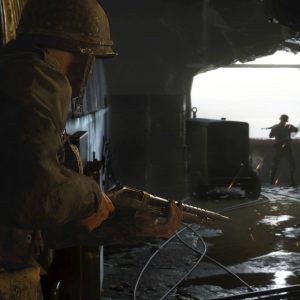 There is no preparation for war
There is no preparation for war
It is clear how Sledgehammer Games wanted it inherit most of the classical elements that characterized the gameplay of the first chapters of Call of Duty, starting from the game hud: the mini-map that houses a star inside it to indicate the objectives, is probably one of the distinctive signs that first catches the eye. But there is also another glorious return in the series, which changes the rules of survival in battle enshrined in a decade now: we are talking about the beloved (or feared, it depends). health bar. Forget the red edges of the screen and wait a few seconds to come back as new after collecting a series of bullets in the belly, because here the only way to get out unscathed is to make good use of the surrounding shelters, understand when to attack and wisely use the medical kits available.
In addition to finding them scattered in the various settings, the kits can also be obtained from a specific companion of ours after filling the bar surrounding the icon of his character by eliminating a certain number of enemies. This new "resource management" system, defined as team skills, turns out to be interesting, as it slightly elevates the role of some members of our platoon making them a point of reference according to our needs. In the wake of obtaining medkits, it is also possible to request ammunition or the support, for example, of mortar rounds.
Regarding the arsenal at our disposal, First of all, the faithful M1 Garand rifle is back that will accompany us on the battlefield from the moment of the Normandy landings. Call of Duty WWII, then, dusts off other old glories typical of the Second World War, including the MP40, the M1911, the Luger, the PPSh-41, the Springfield and other historical weapons that know how to be (re) appreciated for their simplicity. Variety is not lacking and there is everything one would expect, from pistols to submachine guns to rocket launchers.
It will also be possible drive different vehicles in single-player, going from game sections aboard a jeep to piloting a fighter, in a part that is very reminiscent of the battle above the skies of London in Battlefield 1. Unfortunately, in multiplayer the presence of usable vehicles is close to zero, if not for a couple of aircraft to shoot from thanks to the kill streaks, which we'll talk about later. Finally, there is no shortage of classics collectable, which in WWII are nothing more than objects of the time (under the name of "memories") more or less hidden in the various missions.
Call to arms
Sledgehammer Games has been able to do a very good job with regards to the single-player, but it wouldn't be a complete Call of Duty without the multiplayer mode, what we could now define the beating heart of the FPS genre. World War II boasts a substantial multiplayer sector thanks to the proposed variety, but let's go step by step. First of all, the maps in which to play the classic modes are about ten (number undoubtedly destined to increase with future DLCs) and are made in such a way as to minimize downtime: after the respawn, in fact, there will be no need to run around half the map before finding other players to eliminate, but they will be relatively enough a few seconds to get back into the action. This, of course, to the benefit of a consistently high pace of play throughout the match.
Finally, then, we return to a Classic and balanced competitive online which, let's face it, almost has something new after a long time away from the spotlight. No more double jumps, dashes, exoskeletons, heart detectors and the like: to prove our worth in battle we will have only human-sized weapons and a couple of grenades. We will take care of providing extra support rewards for kills, among which we find the fighter pilot, the gliding bomb (in the style of the Predator missile) and a group of paratroopers ready to take the field to give us a hand.
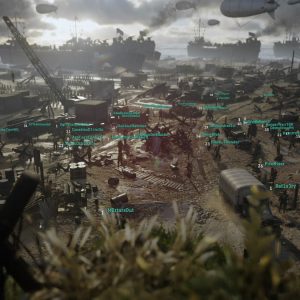 An interesting new entry in multiplayer is certainly the Headquarters, a social space in the style of the Destiny Tower in which it is possible to move freely and in which you can meet other players, redeem rewards, change classes, access training, customize (minimally) our alter ego and do much more . In WWII, he also made his debut there War mode, which allows us to play in three maps (different from the standard ones) called operations: here the fundamental element to bring home the victory is the maximum collaboration with our teammates, as we will have to complete different objectives or, conversely, defend them. Statistics such as the number of kills or deaths, therefore, will not matter, offering a game action totally dictated by continuously throwing yourself into the fray without too many worries. Just to name one, the Neptune operation will see two teams engaged one to breach the enemy defenses to destroy various positions and the other, in fact, in their defense. In short, exactly like in the first mission of the campaign, with the difference that we will have to deal with real players and not with artificial intelligence.
An interesting new entry in multiplayer is certainly the Headquarters, a social space in the style of the Destiny Tower in which it is possible to move freely and in which you can meet other players, redeem rewards, change classes, access training, customize (minimally) our alter ego and do much more . In WWII, he also made his debut there War mode, which allows us to play in three maps (different from the standard ones) called operations: here the fundamental element to bring home the victory is the maximum collaboration with our teammates, as we will have to complete different objectives or, conversely, defend them. Statistics such as the number of kills or deaths, therefore, will not matter, offering a game action totally dictated by continuously throwing yourself into the fray without too many worries. Just to name one, the Neptune operation will see two teams engaged one to breach the enemy defenses to destroy various positions and the other, in fact, in their defense. In short, exactly like in the first mission of the campaign, with the difference that we will have to deal with real players and not with artificial intelligence.
Finally, to close the circle of multiplayer, we think the always appreciated Nazi Zombies mode, which can also be tackled alone but which, of course, is much more enjoyable in a group. First of all, before starting to exterminate hordes of the undead we will be greeted by an interesting and useful prologue that will explain the basics of the story and allow us to familiarize ourselves with the main mechanics. Then we can choose between two game maps: Groesten Haus, set inside a house and, consequently, quite small, and The Last Reich, a rather vast and decidedly more elaborate map as it is full of easter eggs, hidden weapons, secrets, traps and much more to discover .
Unfortunately, it is still theabsence of dedicated servers as regards the online: in fact, the usual host system remains, which can result in lag (although it has rarely happened) if these players have a high latency or packet loss at the time of the game.
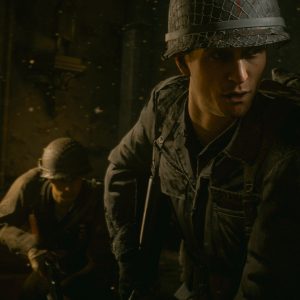 Per aspera ad astra
Per aspera ad astra
From a technical point of view, Call of Duty WWII performs very well, first of all giving excellent and well-kept settings as well as a detailed graphic rendering, which reaches its peak in the interlude scenes. The latter boast a very respectable cinematographic connotation, also thanks to the impeccable facial animations of the various characters and a good dubbing in Spanish. Sledgehammer Games, moreover, was not afraid to show the cruelty of war, often putting us in front of quite raw scenes of mutilated bodies without any censorship.
In terms of frame rates, we tested the game on the first PlayStation 4 ed the frame rate was always stable at 60 fps, except in rare cases of agitated situations that have generated slight drops but which, however, have not in the least affected the overall experience.
Too bad for the reduced environmental destructibility, which unfortunately has left a bad taste in our mouth more than once, especially when you shoot on a wooden fence and you don't notice any sign of letting up. It is certainly an aspect that takes second place, sure, but that does not go unnoticed for the most attentive and demanding players who are looking for the highest level of realism.
Il audio compartmentfinally, it is as always satisfactory, with explosions, shots, shouts and other sound effects of excellent workmanship that will accompany us continuously in our games.
Final comment
Call of duty wwii marks an excellent and welcome return to the origins of the series that any player, whether old or new, can only appreciate. The Second World War has always had an undeniable charm from a historical point of view even if, unfortunately, it has claimed millions of victims, and after so many years away from the videogame spotlight it is quite exciting to come back to relive it. Between an interesting (but at times fragmented) campaign and a full-bodied multiplayer sector, the title really has a lot to offer and will keep you busy for several hours of gameplay. I feel like saying it with a metaphor and I put my face to it: heroes fight and sometimes fall, but never in vain. Here, Call of Duty is a bit of a hero who has fallen (or maybe just slipped) several times, but with this chapter it seems that he has got up and is finally back on the right steps. Hoping this bodes well for the future.
